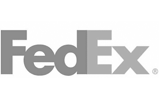2018: The Year of IoT in Buildings
By: Chris Saltz
Date: January 2, 2018
It has officially begun. The days of spending large amounts of money on middleware, software, programming time, and many other “building automation” components are finally coming to an end. And the days of powerful “apps” in commercial buildings are here, like indoor way-finding, space utilization analytics, and more. We experienced this shift years ago in the consumer world. No one buys a large mainframe and puts it in their basement and hires a staff of coders to get word processing for their family business. And we don’t have to individually develop software to hail a cab; we share the cloud. Today we enjoy multi-million dollar algorithms for free, or very low cost (such as the Nest app, or Uber). Sure, we still pay for the thing we need (a thermostat, or a cab ride). But functionality has gone up, and the costs down, drastically.
Whether you know it or not, we just started the same drastic shift in commercial buildings. IoT (the internet of things) for commercial buildings is not really that complicated, by the way. In fact, far less complicated than what we’re leaving behind, building automation. IoT is simply a combination of intelligent edge devices, powerful cloud computing, and economies of scale (sticking with the consumer analogy, a $200 smart thermostat, a multi-million dollar machine learning algorithm in the cloud, and a free app, built into the cost of the thermostat…the economy of scale, aka the “shared economy”).
The first concern I almost always hear is security; which is somewhat strange considering the very people that bring this up always have a phone in their pocket connected to their banking data, their healthcare provider, and most importantly their family including every single detail of their children. Furthermore, they have no idea how weak the cyber-security is with their “on-site” building automation system. Let’s face it, gone are the days of thinking we could keep information behind some “physical” wall. The cloud, it turns out, is significantly more secure than the current mode of operation.
What does the future bring? I highly recommend reading The Master Algorithm by Professor Pedro Domingos. Machine learning algorithms have been around for quite some time; decades. And you have certainly used them (in your web browser, online shopping, and hailing a cab with an app). They’ve also been used in the built environment, as our firm recently vetted 8 different cloud-based software platforms for optimizing the operation of a large central heating and cooling plant for a convention center. You can expect this type of powerful computational efficiency to further permeate every aspect of the built environment (controlling shading in electro-chromatic glass, detecting security threats, enabling augmented reality for building operations or facility entertainment services, etc).
Whether you’re a building owner, operator, designer, or builder, this shift will impact your business in ways that are not unlike other major technology disruptions. You can prepare by bringing a cross-sectional group of clients and employees together and developing your technology master plan. Every disruption has always had winners and loser. This is your chance to leap-frog your competitors in terms of your buildings and their direct and indirect impact on your bottom line. My personal wish is that you have a very happy, healthy, and prosperous new year.
About the Author: Chris Saltz is the Managing Principal of FIX Consulting LLC, a Los Angeles based software & facility technology consulting, design, and design/build firm (www.fixconsulting.com). He has 30 years of experience in mechatronics (mechanical, electrical, and computer/electronics engineering). A highly decorated US Navy Submarine Warfare Officer, Chris has a mechanical engineering degree from Auburn University (magna cum laude), and a masters in nuclear engineering from the Navy. Before FIX, his experience included operating and maintaining complex systems on US Navy nuclear submarines, global strategic naval combat missions, and the management of several field offices and sales teams for Fortune 500 technology companies.
Sample Client List: United Airlines, University of Illinois, Google, Apple, Cisco, CBS Studios, Hawaii DOE.
Practice Areas: Master Planning, Data Management, Software Solutions, Technology CM, Cost Controls








